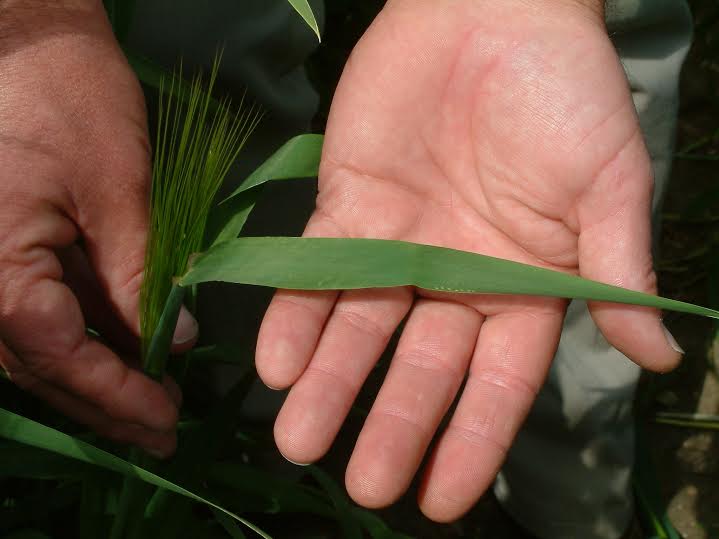
Growers of hybrid barley – now estimated to account for nearly a quarter of the UK's winter feed barley area – are being urged to maintain good green leaf protection during the second part of the season, as a way of maximising the crop’s potential.
That follows recent years’ trials results by breeder Syngenta showing that bolstering later-season fungicide protection boosted average yield by nearly 0.5 t/ha, from 10.54 t/ha to 11.02 t/ha, across three locations in Berwickshire, Oxfordshire and Shropshire – calculated to be worth an extra £25/ha after deducting fungicide costs.
At a site where brackling was present, this was also reduced by about 30% with a robust later-season fungicide strategy, Syngenta technical crop expert, James Marshall-Roberts, points out.
"With current low grain prices, it makes sense to maximise cereal yields as a way of boosting profits," says Mr Marshall-Roberts.
"With hybrid barley now accounting for about 23% of the UK winter feed barley area, these agronomy trials were designed to help growers maximise output.
"The increased yield and reduced brackling results were seen using a three-spray fungicide programme.
"We’re not necessarily advocating such a three-spray approach – though we do know that later-season green leaf area protection is important in hybrid barley because its flag leaves can be up to three times larger than in conventional winter barley.
"Instead, based on these results and where conditions allow, hybrid barley growers may simply want to consider a slightly more robust rate of their T2 fungicide – for example, the SDHI Cebara tank mixed with prothioconazole – and applied slightly later than normal if brackling is a concern, for example around GS55-59.
"Alternatively, if you don’t wish to delay that long, then consider adding in Bravo or Amistar Opti when applying a plant growth regulator, typically around GS37-39, to cost-effectively bridge the gap between an earlier fungicide and the GS55-59 spray. This will give activity against Rhynchosporium and barley spotting.”
With potentially two months or more between late-season fungicide sprays being applied in May and barley harvest, Mr Marshall-Roberts says it is worth using a long-lasting fungicide during this important period for grain-filling.
It is for this reason that Cebara is recommended, he says, and because the disease spectrum it controls fits well with Hyvido hybrid barley, when the focus should be on brown rust and net blotch.
"All this said, remember that winter barley grows rapidly at this time of year. So monitor crops regularly, and don’t be tempted to stretch spray intervals. Otherwise you could leave new growth unprotected."
Mr Marshall-Roberts says trials on the benefits of later-season fungicides for improving yield and reducing brackling in hybrid barley are on-going.
